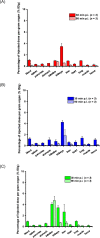Biomimetic Analogues of the Desferrioxamine E Siderophore for PET Imaging of Invasive Aspergillosis: Targeting Properties and Species Specificity
- PMID: 38907990
- PMCID: PMC11284789
- DOI: 10.1021/acs.jmedchem.4c00887
Biomimetic Analogues of the Desferrioxamine E Siderophore for PET Imaging of Invasive Aspergillosis: Targeting Properties and Species Specificity
Abstract
The pathogenic fungus Aspergillus fumigatus utilizes a cyclic ferrioxamine E (FOXE) siderophore to acquire iron from the host. Biomimetic FOXE analogues were labeled with gallium-68 for molecular imaging with PET. [68Ga]Ga(III)-FOXE analogues were internalized in A. fumigatus cells via Sit1. Uptake of [68Ga]Ga(III)-FOX 2-5, the most structurally alike analogue to FOXE, was high by both A. fumigatus and bacterial Staphylococcus aureus. However, altering the ring size provoked species-specific uptake between these two microbes: ring size shortening by one methylene unit (FOX 2-4) increased uptake by A. fumigatus compared to that by S. aureus, whereas lengthening the ring (FOX 2-6 and 3-5) had the opposite effect. These results were consistent both in vitro and in vivo, including PET imaging in infection models. Overall, this study provided valuable structural insights into the specificity of siderophore uptake and, for the first time, opened up ways for selective targeting and imaging of microbial pathogens by siderophore derivatization.
Conflict of interest statement
The authors declare no competing financial interest.
Figures










References
Publication types
MeSH terms
Substances
LinkOut - more resources
Full Text Sources
Medical

